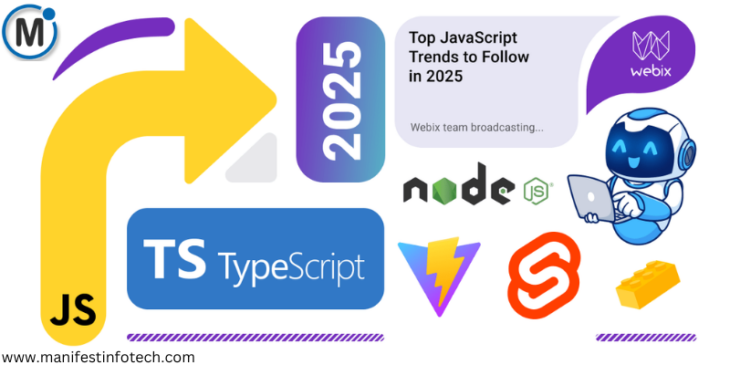
JavaScript and TypeScript continue to evolve, shaping the future of web development with new technologies and frameworks. As developers seek better performance, scalability, and innovative solutions, several trends are emerging as key players in modern development. Here’s a look at the hottest trends in JavaScript and TypeScript that are transforming the industry.
React Server Components (RSC) and Next.js 14
React Server Components (RSC) are revolutionizing how we build React applications by enabling server-side rendering while reducing the JavaScript bundle size on the client. With the release of Next.js 14, developers can leverage improved streaming capabilities, optimized caching, and enhanced server-side execution. This means faster load times, improved SEO, and seamless user experiences for web applications.
Key Benefits:
Faster initial page loads with server-side rendering.
Reduced client-side JavaScript, leading to better performance.
Enhanced data-fetching strategies with React Suspense and streaming.
TypeScript for Scalable Applications
TypeScript has become the go-to language for building scalable and maintainable applications. With its static typing, developers can catch errors early, improving code quality and reducing bugs in production. The adoption of TypeScript in enterprise-level projects has skyrocketed, making it an essential tool for teams handling large-scale applications.
Why TypeScript?
Strong typing improves code safety and maintainability.
Better developer experience with autocompletion and refactoring support.
Seamless integration with JavaScript libraries and frameworks.
WebAssembly (WASM) and JavaScript Performance
WebAssembly (WASM) is pushing the boundaries of JavaScript performance by allowing developers to run near-native speed code in the browser. With support for languages like Rust, C++, and Go, WASM enables high-performance applications such as gaming, video editing, and real-time data processing.
Advantages of WASM:
Runs code at near-native speed in the browser.
Enhances JavaScript applications with computationally intensive tasks.
Expands the possibilities of web development beyond JavaScript limitations.
Astro and Modern Static Site Generation
Astro is redefining static site generation by allowing developers to ship less JavaScript and optimize website performance. Unlike traditional frameworks, Astro focuses on rendering HTML at build time and only loading JavaScript when needed. This approach results in blazing-fast websites, improved SEO, and reduced infrastructure costs.
Why Astro?
Minimal JavaScript runtime, improving page speed.
Built-in support for multiple frameworks like React, Vue, and Svelte.
Enhanced developer experience with a simple and flexible architecture.
AI-Powered Chatbots with JavaScript
Artificial Intelligence (AI) is transforming web applications, and JavaScript is at the forefront of this revolution. With tools like TensorFlow.js and OpenAI’s APIs, developers can build AI-powered chatbots for customer support, automation, and personalized user experiences.
How JavaScript is Driving AI?
Integration with machine learning models using TensorFlow.js.
Real-time chatbot interactions powered by JavaScript frameworks.
Enhanced user engagement through intelligent automation.
Final Thoughts
As JavaScript and TypeScript continue to evolve, developers must stay ahead of the curve by embracing these emerging technologies. Whether it’s optimizing performance with WASM, building AI-driven applications, or leveraging RSC in Next.js 14, the future of web development is brighter than ever.
If you are looking for any services related to Website Development, App Development, Digital Marketing and SEO, just email us at nchouksey@manifestinfotech.com or Skype id: live:76bad32bff24d30d
𝐅𝐨𝐥𝐥𝐨𝐰 𝐔𝐬:
𝐋𝐢𝐧𝐤𝐞𝐝𝐢𝐧: linkedin.com/company/manifestinfotech
𝐅𝐚𝐜𝐞𝐛𝐨𝐨𝐤: facebook.com/manifestinfotech/
𝐈𝐧𝐬𝐭𝐚𝐠𝐫𝐚𝐦: instagram.com/manifestinfotech/
𝐓𝐰𝐢𝐭𝐭𝐞𝐫: twitter.com/Manifest_info
#JavaScript #TypeScript #ReactServerComponents #NextJS #WebAssembly #AstroJS #AIChatbots #WebDevelopment #TechTrends2025